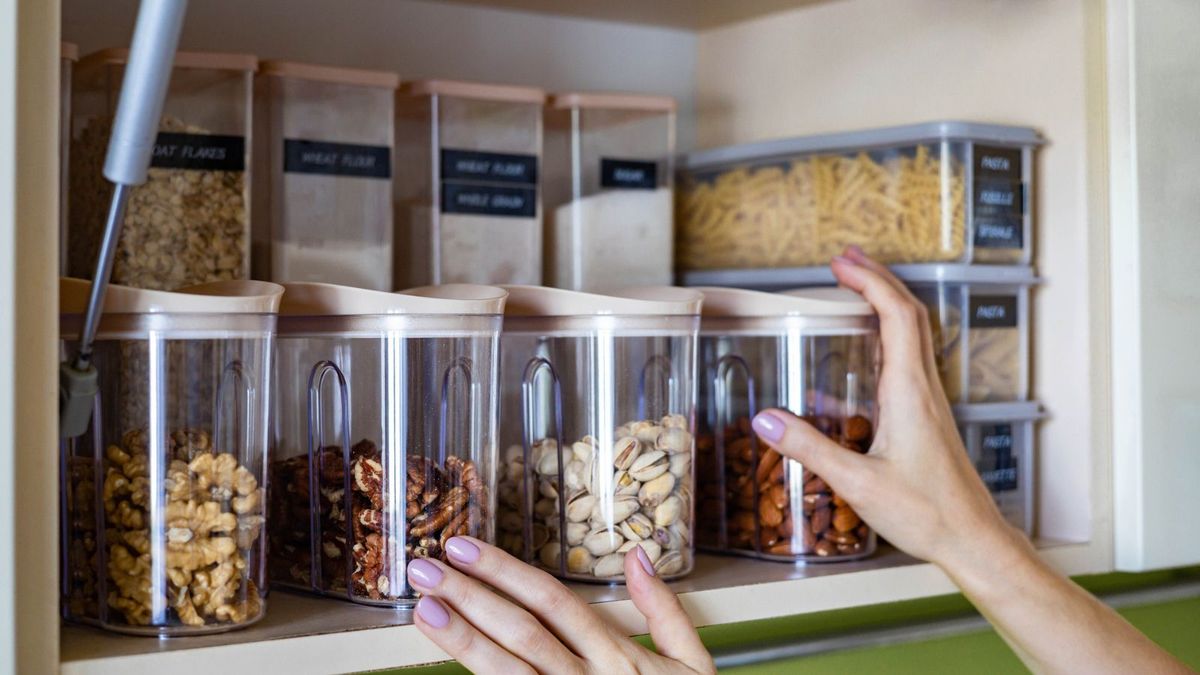We have all fallen into the same thrift store trap before – it is pre-loved and affordable, so it feels fine to be frivolous – especially when it comes to items that should help get things organized.
However, buying several unnecessary items just because they’re cheap won’t help organize your home, and will become part of the problem instead, adding to your clutter.
Professional home organizers always follow these five rules to swerve this pitfall when thrifting storage ideas.
1. Shop with intention
(Image credit: Nkuku)
Before going shopping, it is key to declutter the space you’re buying storage for first and establish a list of items you need to help organize what is left. Creating this intention before you leave the house is a home organizing golden rule to prevent coming home with more than you need.
This reduce overspending on storage pieces that don’t serve you, suggests Brenda Scott, professional organizer and owner of Tidy My Space. She says, ‘Only shop when you need something specific. This reduces the chance of impulse purchasing and bringing more clutter into your home. Know what you need and can use.’
2. Come armed with measurements
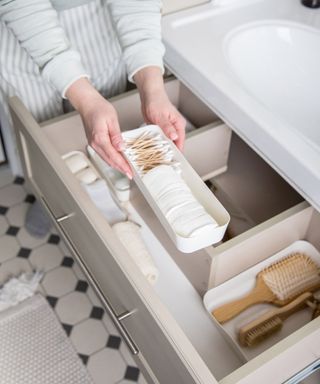
(Image credit: Getty Images)
Another great way to avoid thrifting pieces that won’t work for your home is to go to the store with measurements in hand, suggests Amélie Saint-Jaques, a professional organizer and founder of Amélie Organizes.
She says, ‘When shopping for organizing supplies, it is important to first know what you are storing and where. You need those parameters to make sure that your supplies are appropriate – for example, that they are the right size to store your items and that they will fit on your shelf. You don’t want to buy shelf risers only to find out they are too wide or tall for your shelves.’
When measuring for drawer organizers, use a measuring tape and jot down the dimensions on a piece of paper or your phone, or make an outline of your drawer with a large piece of paper. You can then lay this out at the store and position multiple organizers on top to find the perfect layout before spending.
Remember to take into account the depth of your drawer to ensure you can still close it with the organizers in place.
3. Quality check
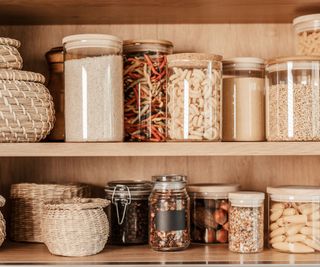
(Image credit: Getty Images)
One downside to shopping at the thrift store is that not everything will be matching or in top condition. They are all second-hand, after all.
Meaghan Kessman, professional home organizer and owner of the eponymous organizing company, reminds us to always ‘inspect for durability and cleanliness’ befoer buying to ensure your purchases maximize storage in every room, rather than hinder it.
Some pieces could be cleaned up or fixed, but don’t pick up anything that will prove too much work for you. A storage piece is only helpful if it is functional. If you leave it sitting on your counter, promising to get around to fixing it ‘soon’, it is simply clutter.
4. Set a budget
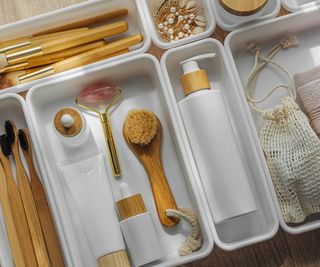
(Image credit: Igishevamaria via Getty Images)
Just because you are shopping at thrift stores doesn’t mean you should not have a budget. ‘Limiting spending helps you to make thoughtful purchases,’ continues Meaghan.
It can also help you curb overspending on one item, especially if you are looking for larger or multiple storage pieces at vintage fairs and markets as the costs will soon add up.
5. Choose versatile options
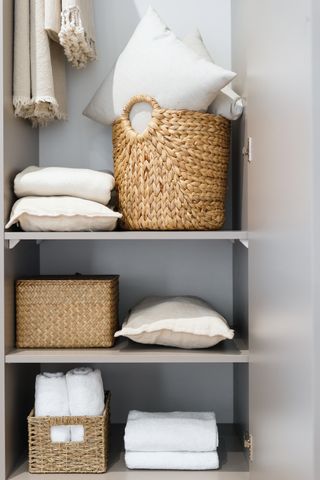
(Image credit: Getty Images)
When shopping for storage at the thrift store, you will often be picking up pieces that are not completely suited to your needs. For this reason, Audra George, professional home organizer and owner of Pretty Neat, Oklahoma, recommends picking up versatile pieces that can be used in a multitude of ways.
‘Choose items that are versatile and can change with your needs over time,’ she urges. This will help to prevent items from being returned to the thrift store within a few months of bringing them home.
To avoid spending mishaps, consult our list of storage products professional organizers can’t live without for timeless storage inspiration for your home.
When you can’t organize without spending any money, the thrift store is your next best bet for keeping costs low. If you cannot find what you need at the thrift store, consider shopping your home first, reusing old containers and decluttering without throwing away to keep your home organization sustainable and reduce your plastic usage.

